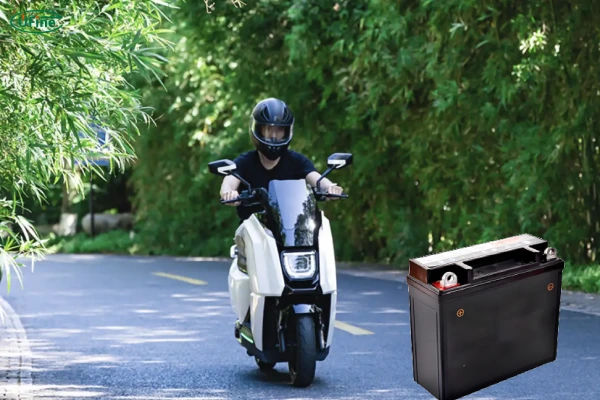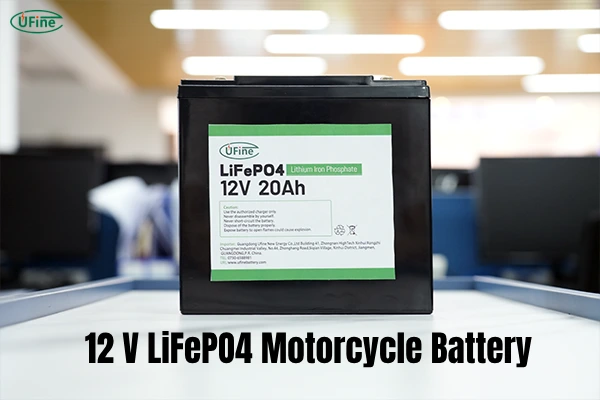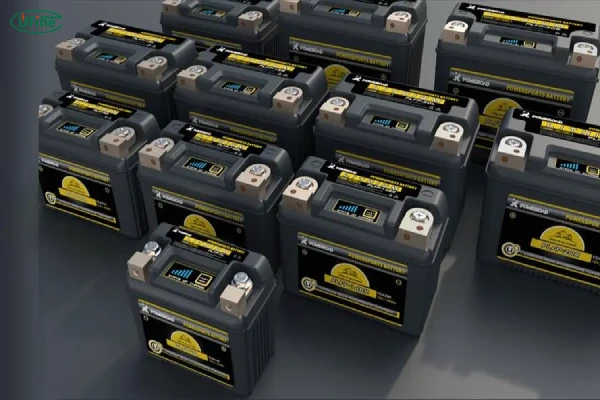
- Part 1. Understanding motorcycle battery
- Part 2. Voltage and capacity
- Part 3. What type of battery is used in a motorcycle?
- Part 4. Should I choose a lithium motorcycle battery?
- Part 5. How long can a motorcycle battery last?
- Part 6. Buying a motorcycle battery: key parameters to consider
- Part 7. How to choose a suitable charger?
- Part 8. How to charge a motorcycle battery?
- Part 9. Maintenance and care
Motorcycle batteries may not seem like the most exciting part of owning a bike, but they’re critical to ensuring smooth rides and hassle-free adventures. Choosing the right battery is essential, and understanding its basic functions, chemistry, and care can make a world of difference. Whether you’re a new rider or an experienced motorcyclist, having in-depth knowledge of how to select, charge, and maintain your battery can enhance your bike’s performance and reliability.
Part 1. Understanding motorcycle battery
Motorcycle batteries are designed to provide the electrical power necessary to start the engine and operate essential components like lights, gauges, and accessories. Their structure typically consists of a lead-acid or lithium-ion chemistry encased in a durable shell. Batteries work by converting chemical energy into electrical energy, which powers the ignition system and supports electrical demands.
When you press the starter button, the battery sends voltage to the starter motor, cranking the engine to life. Once the engine is running, the alternator charges the battery, ensuring it’s ready for the next use. This cycle is critical for smooth and efficient bike operation, making the battery one of the most important components in your motorcycle’s electrical system.
Part 2. Voltage and capacity
Motorcycle batteries are commonly rated in terms of voltage and capacity. Most motorcycles use 12V batteries, although older bikes may still use 6V batteries. The voltage represents the electrical potential of the battery, while the capacity, measured in amp-hours (Ah), indicates how long the battery can supply a certain amount of current before needing a recharge.
For instance, a typical motorcycle battery may have a capacity of 10Ah, meaning it can provide 10 amps of current for one hour. Higher capacity batteries are generally used in larger motorcycles or models with more electronics, such as touring bikes with GPS, heated grips, or audio systems. Knowing your motorcycle’s voltage and capacity requirements helps ensure you choose a battery that will perform well for your specific model.
Part 3. What type of battery is used in a motorcycle?
There are various types of motorcycle batteries, and choosing the right one can affect your bike’s performance. The most common types include:
- Lead-Acid Batteries: Traditional, cost-effective, and widely available. They come in two types:
- Flooded Lead-Acid: Requires regular maintenance, such as topping off water levels. It’s durable but may require extra care.
- Absorbed Glass Mat (AGM): Maintenance-free and more resistant to vibration. Ideal for modern motorcycles.
- Lithium-Ion Batteries: Lightweight, powerful, and long-lasting. They’re becoming more popular due to their superior performance and low self-discharge rate. However, they tend to be more expensive than lead-acid batteries.
AGM VS Lithium VS Lead-Acid Battery: Comprehensive Comparison
Each type of battery has its pros and cons, and the choice depends on your motorcycle model and riding needs.
Part 4. Should I choose a lithium motorcycle battery?
Lithium motorcycle batteries are known for their many advantages. They are much lighter than their lead-acid counterparts, sometimes weighing 60-70% less. This weight reduction can improve your bike’s performance, especially for riders looking to reduce overall weight for racing or long-distance touring. Lithium batteries also last longer, often providing up to 5 years of service, compared to 2-3 years for lead-acid batteries.
However, lithium batteries have a higher upfront cost, which can be a downside for budget-conscious riders. They may also be sensitive to extreme temperatures, so riders in very cold climates should ensure they’re using the battery within recommended conditions. But if you’re looking for a lightweight, long-lasting solution with minimal maintenance, lithium could be the way to go.
Part 5. How long can a motorcycle battery last?
The lifespan of a motorcycle battery depends on its type, usage, and how well it’s maintained. Lead-acid batteries typically last 2-3 years, while lithium batteries can last up to 5 years. The environment also plays a role. Batteries used in hotter climates tend to wear out faster, while cold weather can decrease a battery’s performance if it’s not suited for such conditions.
Routine maintenance, such as keeping the battery charged and cleaning the terminals, can help extend its life. If you notice slow starts or that your battery loses charge quickly, it may be time to consider a replacement.
Part 6. Buying a motorcycle battery: key parameters to consider
When purchasing a motorcycle battery, there are a few key factors to keep in mind:
- Size and Fitment: Ensure the battery fits your motorcycle’s battery compartment. This is crucial for both performance and safety.
- Cold Cranking Amps (CCA): This measures the battery’s ability to start your engine in cold temperatures. The higher the CCA, the better.
- Type of Use: Consider your riding style. If you’re using your motorcycle in extreme conditions, opt for a battery that can handle temperature fluctuations or rough terrain.
These factors ensure you choose a battery that suits your motorcycle’s specifications and your riding needs.
Part 7. How to choose a suitable charger?
Choosing the right charger is essential to maintaining your motorcycle battery’s health. Chargers should match the battery’s voltage and type. For instance, lead-acid batteries require a specific charger designed for their chemistry, while lithium batteries need a lithium-specific charger. Using the wrong charger can damage the battery or reduce its lifespan.
Part 8. How to charge a motorcycle battery?
Charging your motorcycle battery is simple but must be done correctly to avoid damage. Use a charger compatible with the battery’s voltage and chemistry. For lead-acid batteries, ensure you have a charger with a trickle or float mode to avoid overcharging. Lithium batteries should only be charged with a charger designed for lithium technology to avoid damage.
Charging times vary depending on the battery’s size and the charger. On average, a full charge can take 4-8 hours. Always follow the manufacturer’s recommendations for charging to ensure safety and longevity.
Part 9. Maintenance and care
Proper maintenance extends your motorcycle battery’s life and ensures reliable performance. Here are a few maintenance tips:
- Keep the Battery Clean: Dirt and corrosion can interfere with electrical connections. Regularly clean the battery terminals with a mixture of baking soda and water.
- Check the Charge Regularly: A motorcycle that sits idle for extended periods can lose charge. Use a battery tender or trickle charger to maintain the battery when the bike isn’t in use.
- Store Properly: If you’re storing your motorcycle for the winter, remove the battery and keep it in a cool, dry place. Charge it periodically to maintain its health.
Related Tags:
More Articles

Battery Load Test: A Comprehensive Guide
Step-by-step battery load test guide for car, solar & industrial use. Learn how to load test a battery, interpret voltage charts, and avoid common mistakes.
The Comprehensive Guide to Battery Balancing and Battery Balancer
Discover how battery balancers improve lithium battery performance, lifespan, and safety. Learn types, functions, and tips to choose the right balancer.
What Is the Best Voltage for a Chainsaw Battery?
Compare 12V-80V chainsaw batteries for light pruning, medium firewood, and professional cutting. See best battery chainsaw with runtime charts and safety tips.
Lithium VS. Alkaline Batteries: A Comprehensive Comparison
Lithium batteries last 3–7× longer than alkaline and perform better in cold weather. Compare lifespan, cost, safety, and best uses to choose the right battery.
Comparing Lithium-Sulfur and Lithium-Ion Batteries: Which is Right for You?
Compare lithium-sulfur (Li-S) and lithium-ion batteries on energy, lifespan, cost, safety, and applications. Best choice for drones, EVs, and electronics.





